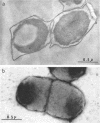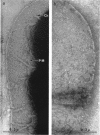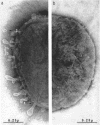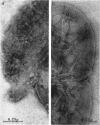Abstract
The rate of survival after osmotic shocks was found to be dependent on the state of growth. When growing logarithmically, Escherichia coli was about 20 to 100 times more sensitive to an abrupt decrease of the environmental osmotic pressure than when it was in the stationary phase. Subjecting rapidly growing cells to such a treatment caused fingerlike extrusions to emerge from the bacterial wall. Our results suggest that underneath these extrusions the rigid layer of the wall contains weak areas which appear as discontinuities or gaps when viewed in an electron microscope. After exposure to osmotic shock, the gaps became wider. We concluded that the gaps represent sites of mucopolymer synthesis where the rigid structure has temporarily been opened by hydrolytic enzymes to allow for the insertion of new wall material into the older portions of the wall.
Full text
PDF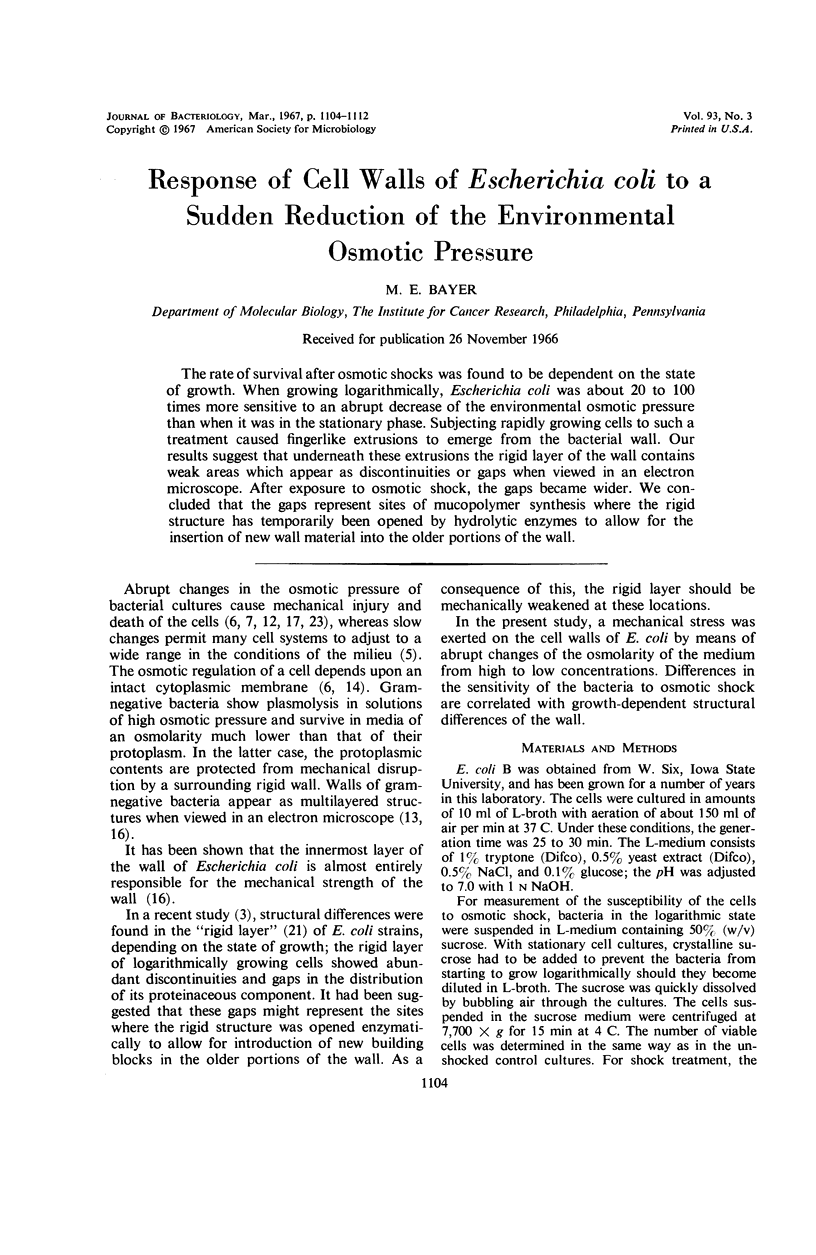
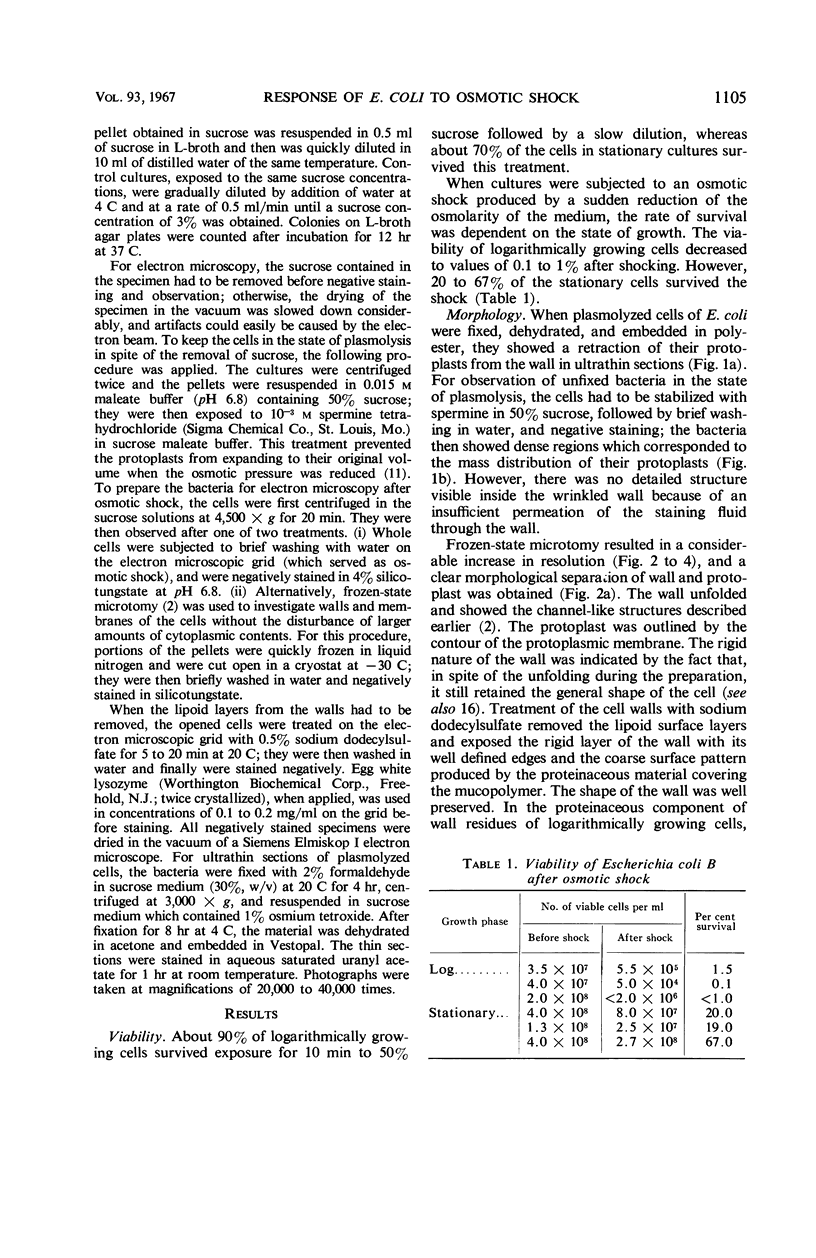
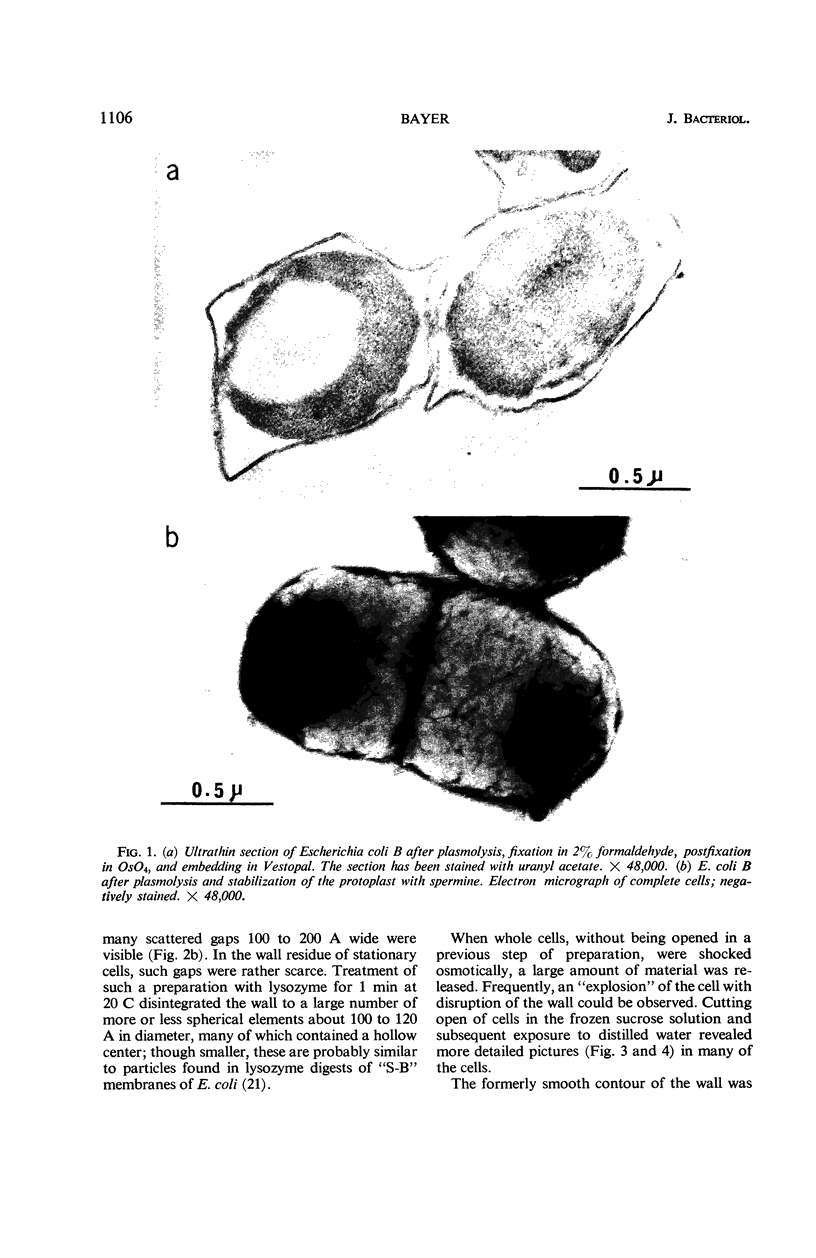
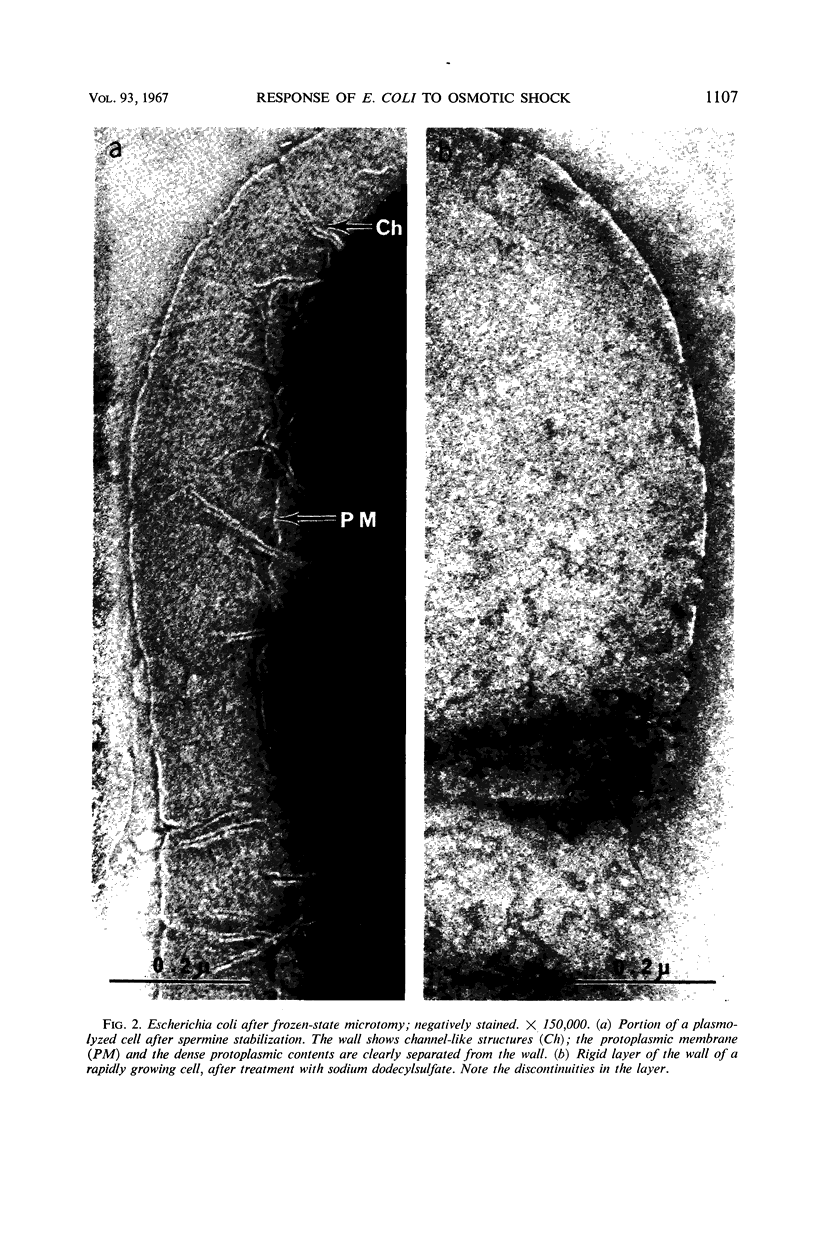
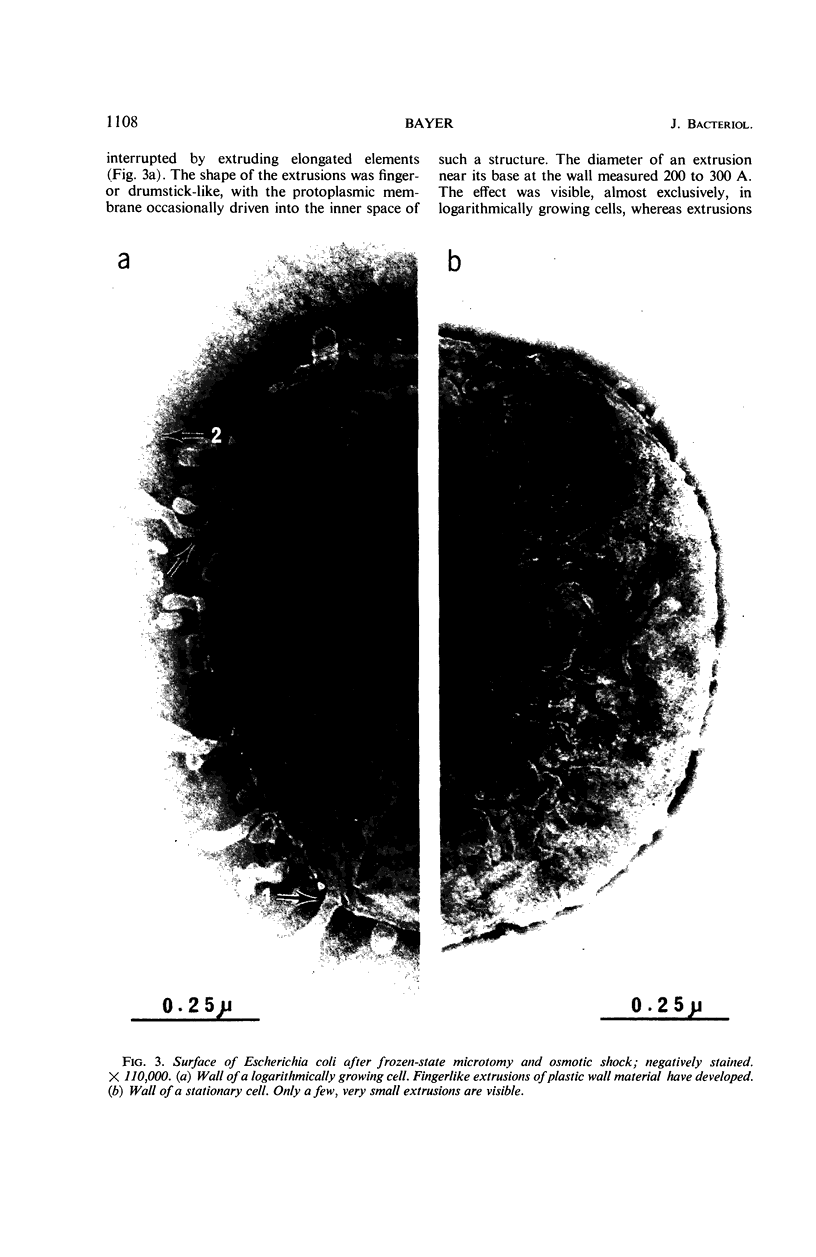
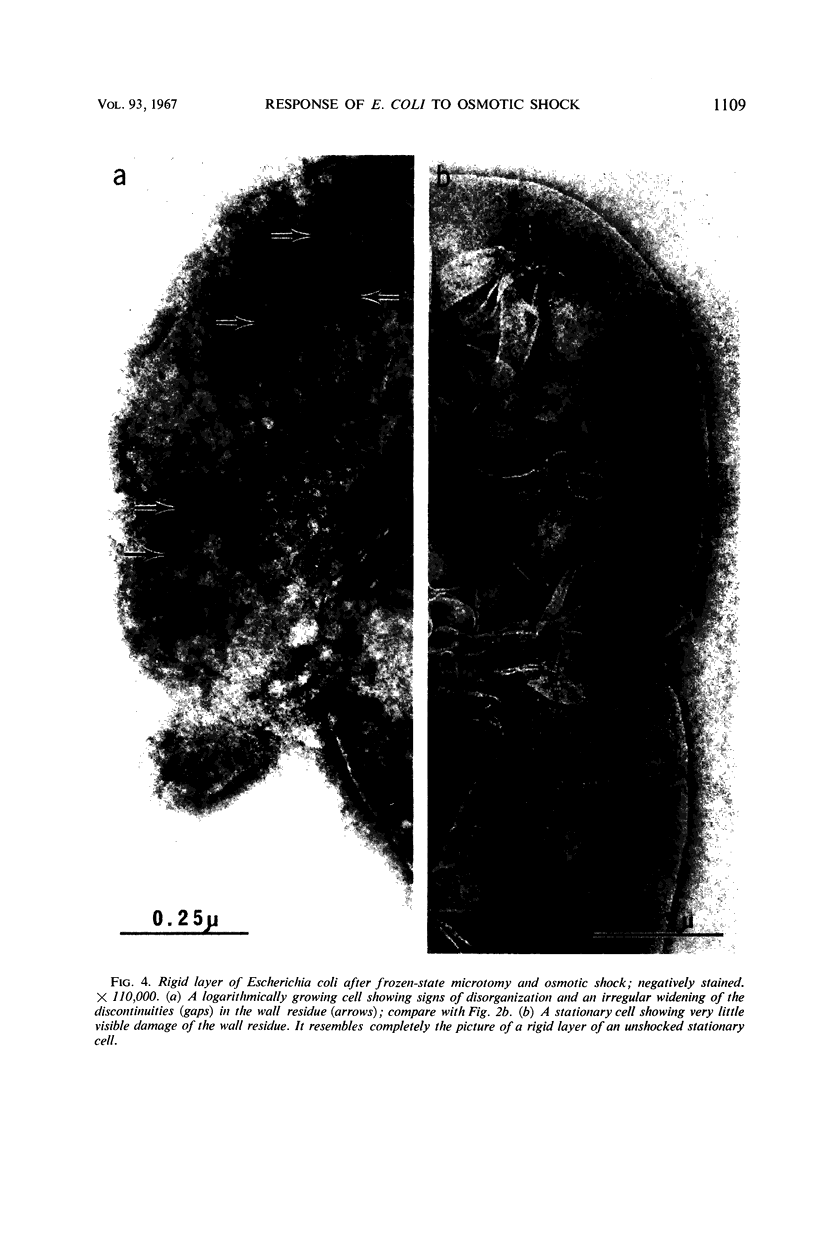
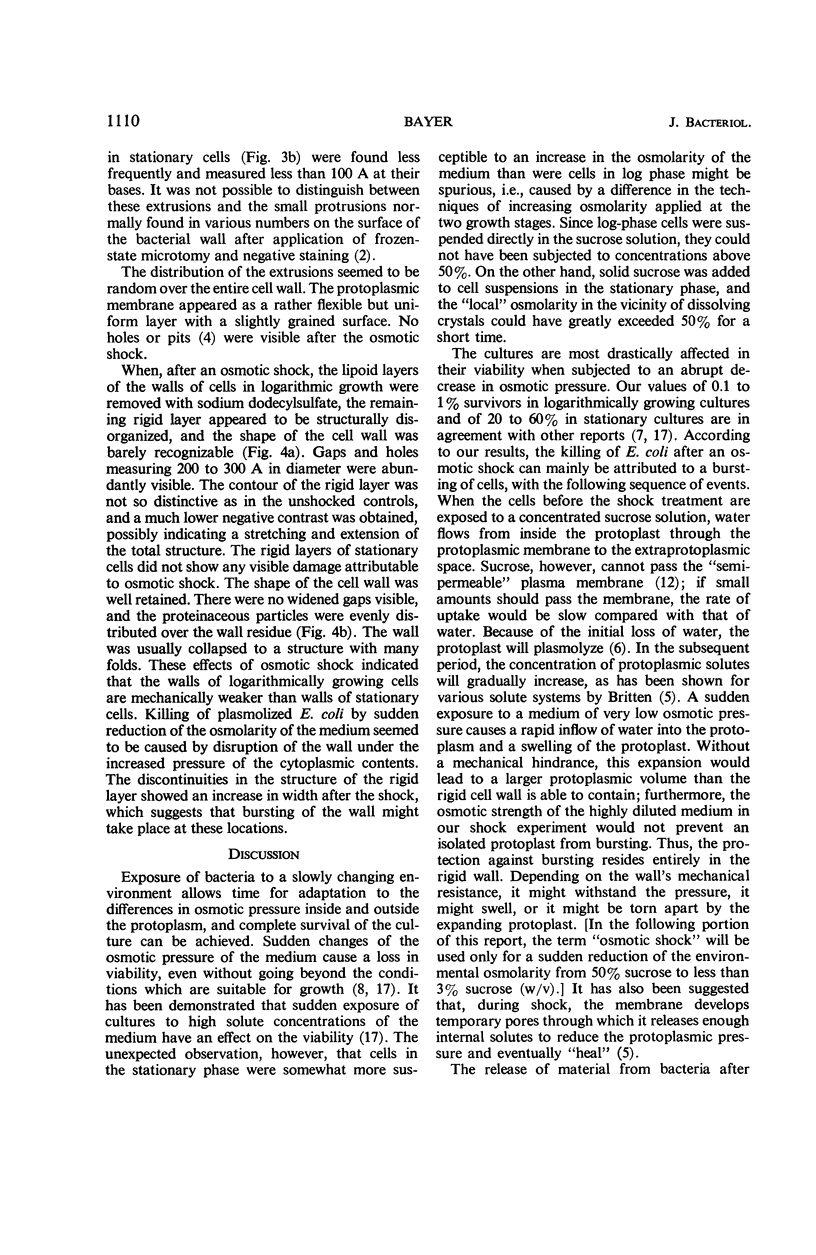
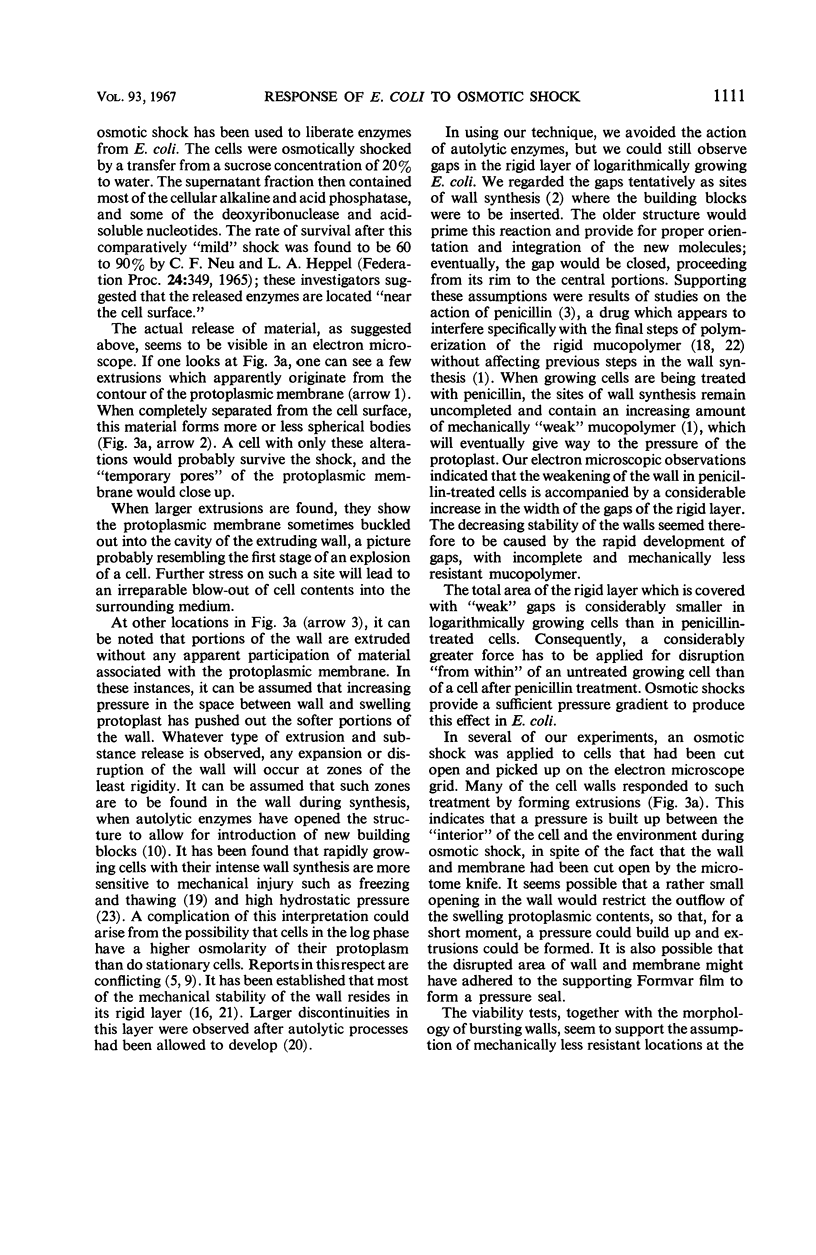
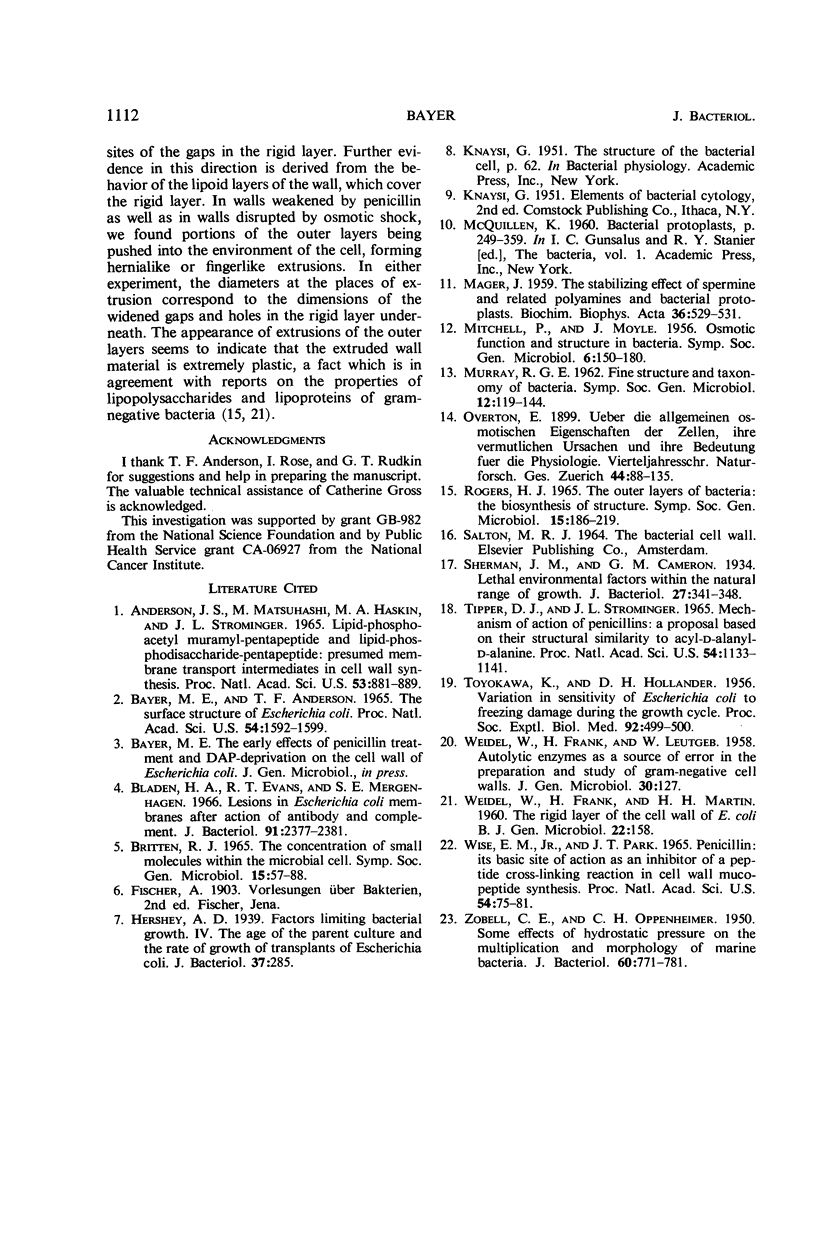
Images in this article
Selected References
These references are in PubMed. This may not be the complete list of references from this article.
- ANDERSON J. S., MATSUHASHI M., HASKIN M. A., STROMINGER J. L. LIPID-PHOSPHOACETYLMURAMYL-PENTAPEPTIDE AND LIPID-PHOSPHODISACCHARIDE-PENTAPEPTIDE: PRESUMED MEMBRANE TRANSPORT INTERMEDIATES IN CELL WALL SYNTHESIS. Proc Natl Acad Sci U S A. 1965 Apr;53:881–889. doi: 10.1073/pnas.53.4.881. [DOI] [PMC free article] [PubMed] [Google Scholar]
- Bayer M. E., Anderson T. F. The surface structure of Escherichia coli. Proc Natl Acad Sci U S A. 1965 Dec;54(6):1592–1599. doi: 10.1073/pnas.54.6.1592. [DOI] [PMC free article] [PubMed] [Google Scholar]
- Bladen H. A., Evans R. T., Mergenhagen S. E. Lesions in Escherichia coli membranes after action of antibody and complement. J Bacteriol. 1966 Jun;91(6):2377–2381. doi: 10.1128/jb.91.6.2377-2381.1966. [DOI] [PMC free article] [PubMed] [Google Scholar]
- HOLLANDER D. H., TOYOKAWA K. Variation in sensitivity of Escherichia coli to freezing damage during the growth cycle. Proc Soc Exp Biol Med. 1956 Jul;92(3):499–500. doi: 10.3181/00379727-92-22523. [DOI] [PubMed] [Google Scholar]
- Hershey A. D. Factors Limiting Bacterial Growth: IV. The Age of the Parent Culture and the Rate of Growth of Transplants of Escherichia coli. J Bacteriol. 1939 Mar;37(3):285–299. doi: 10.1128/jb.37.3.285-299.1939. [DOI] [PMC free article] [PubMed] [Google Scholar]
- MAGER J. The stabilizing effect of spermine and related polyamines and bacterial protoplasts. Biochim Biophys Acta. 1959 Dec;36:529–531. doi: 10.1016/0006-3002(59)90195-7. [DOI] [PubMed] [Google Scholar]
- Sherman J. M., Cameron G. M. Lethal Environmental Factors Within the Natural Range of Growth. J Bacteriol. 1934 Apr;27(4):341–348. doi: 10.1128/jb.27.4.341-348.1934. [DOI] [PMC free article] [PubMed] [Google Scholar]
- Tipper D. J., Strominger J. L. Mechanism of action of penicillins: a proposal based on their structural similarity to acyl-D-alanyl-D-alanine. Proc Natl Acad Sci U S A. 1965 Oct;54(4):1133–1141. doi: 10.1073/pnas.54.4.1133. [DOI] [PMC free article] [PubMed] [Google Scholar]
- WEIDEL W., FRANK H., LEUTGEB W. Autolytic enzymes as a source of error in the preparation and study of gram-negative cell walls. J Gen Microbiol. 1963 Jan;30:127–130. doi: 10.1099/00221287-30-1-127. [DOI] [PubMed] [Google Scholar]
- WEIDEL W., FRANK H., MARTIN H. H. The rigid layer of the cell wall of Escherichia coli strain B. J Gen Microbiol. 1960 Feb;22:158–166. doi: 10.1099/00221287-22-1-158. [DOI] [PubMed] [Google Scholar]
- Wise E. M., Jr, Park J. T. Penicillin: its basic site of action as an inhibitor of a peptide cross-linking reaction in cell wall mucopeptide synthesis. Proc Natl Acad Sci U S A. 1965 Jul;54(1):75–81. doi: 10.1073/pnas.54.1.75. [DOI] [PMC free article] [PubMed] [Google Scholar]
- ZOBELL C. E., OPPENHEIMER C. H. Some effects of hydrostatic pressure on the multiplication and morphology of marine bacteria. J Bacteriol. 1950 Dec;60(6):771–781. doi: 10.1128/jb.60.6.771-781.1950. [DOI] [PMC free article] [PubMed] [Google Scholar]



